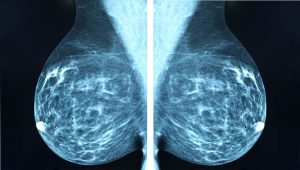 The most recent guidelines for breast cancer screening are intended to provide women more opportunity to voice their health care concerns and make more informed health care decisions. This matrix of rules are better at taking into account personal values and personal preferences, weighing them more heavily than the previous guidelines, which relied more on age and risk factor, alone.
The most recent guidelines for breast cancer screening are intended to provide women more opportunity to voice their health care concerns and make more informed health care decisions. This matrix of rules are better at taking into account personal values and personal preferences, weighing them more heavily than the previous guidelines, which relied more on age and risk factor, alone.
Released on Monday by the Canadian Task Force on Preventive Health Care, the guidelines encourage women between the ages of 40 and 74 to discuss breast cancer screening with their primary care doctors. The goal would be to shoot for making a shared decision regarding the appropriateness for a mammogram according to the patient’s preferences.
The previous 2011 guidelines made routine mammogram recommendations to all women between the ages of 40 and 49 and a screening test every 2-3 years for women between the ages of 50 and 74.
Moore makes sure to note that even though mammography offers excellent benefit in terms of reducing risk of death from breath cancer, it is also associated with some risk. For example, a false positive can simply cause distress; and because they are actually quite common, they can lead to additional [uncomfortable] testing and even a very invasive—and completely unnecessary—biopsy.
For example, the task force says they found that for every 1,000 women between the ages of 40 and 49, who were screened over a 7-year period, mammography resulted in 294 false-positives. That is a fail-rate of nearly 30 percent! Unfortunately, then, these false positives led to 43 unnecessary biopsies. And the results were similar for the 70-74 age group, which resulted in 219 false positives and 30 biopsies (out of a representative sample size of 1,000).
Moore also warns about the risk of overdiagnosis and overtreatment. These can lead to increased potential harm from radiation and chemotherapy or other unnecessary or risky surgery. Also, overdiagnosis is a particularly major concern because some cancers grow at different rates. This means that even if you are able to diagnose cancer, it is important to determine where it is located and how fast it will develop before discussing treatment options and potential outcomes.
The new guidelines have been published in the Canadian Medical Association Journal.
